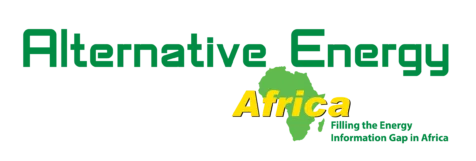Release
Siemens Infrastructure & Cities has developed an automatic load shedding system for the power supply of large-scale industrial plants, helping to stabilize the networks in critical situations. Siemens has integrated the "automatic load shedding" function into the Sicam station control system and into Siprotec protection equipment. The solution is based on a distributed architecture and the IEC 61850 communication standard. The first systems are being launched for use in the oil and gas industry where in many cases industrial networks are installed that supply power to complex production processes without being connected to the public grid (island networks). If sufficient power is not available, the load shedding automatically shuts down low-priority loads and restores the balance between power generated and power consumed, enabling uninterrupted operation of high-priority core processes.
In the oil and gas industry, power is often supplied to the systems extracting and processing the oil and natural gas from island networks that are not connected to the public grid. Instead from island networks power also can be supplied from networks which are capable for islanding and connected to the public grid, but detachable by demand. This is the case in refineries and liquefied gas production as well as with oil and gas storage facilities or petrochemical systems. The stability of these networks is of considerable importance because an island grid is not supplied by a larger network in the event of failure and also because any disruption to the production processes in the oil and gas industry usually has major financial consequences. Siemens has developed the automatic load shedding solution to maintain stable voltage and frequency levels in industrial networks.
If critical events occur in the network such as an overload situation or a generator trip, the control and protection system detects the imbalance between the power generated and the power consumed and shuts down low-priority loads. The resulting power boost stabilizes the network and ensures that there is no interruption to the production processes. A balance of the active power is calculated continuously so that the load is only reduced by the required amount. GOOSE messages (Generic Object Oriented Substation Events) defined in the IEC 61850 communication standard provide an immediate response to the automatic load shed. The messages are transmitted very quickly via Ethernet with high priority, enabling response times of the load shedding function of less than 70 milliseconds.
Automatic load shedding is divided up into three areas: fast load shedding, dynamic power-based load shedding and frequency-based load shedding. In the case of fast power-based load shedding (FPLS), low-priority loads are shut down when the network is separated from a public grid or in the event of generator failure. The remaining loads in the power supply system are fed by local generators. Dynamic power-based load shedding (DPLS) provides sufficient power reserve in an island network. The power reserve level is set by the operator via the station control system.
Independently of the FPLS and DPLS load shedding functions, frequency-based load shedding (FBLS) is tripped whenever the frequency of the power supply falls below a certain threshold. Frequency-based load shedding constitutes a reserve function that is also triggered when multiple faults occur simultaneously in the network and prevents an unwanted drop in frequency. Manual load shedding is also possible via the Sicam 230 station operation of the Siemens control system. Sicam 230 also generates the topological calculation which helps to detect when the network breaks up into several subnets which can be taken into account by the automatic load shedding system. The topological calculation is of particular interest because it is configured graphically and works procedurally without the need for any extensive project-specific Boolean logic.
Energy-efficient, eco-friendly solutions for setting up intelligent power supply networks (Smart Grids) are part of Siemens’ Environmental Portfolio. In fiscal 2011, revenue from the portfolio totaled nearly EUR30 billion, making Siemens one of the world’s largest suppliers of eco-friendly technologies. In the same period, the company’s products and solutions enabled customers to reduce their carbon dioxide (CO2) emissions by nearly 320 million tons, an amount equal to the total annual CO2 emissions of Berlin, Delhi, Hong Kong, Istanbul, London, New York, Singapore and Tokyo.
Make sure you visit and click ‘Like’ on our Facebook page to receive even more news and updates from Alternative Energy Africa.
